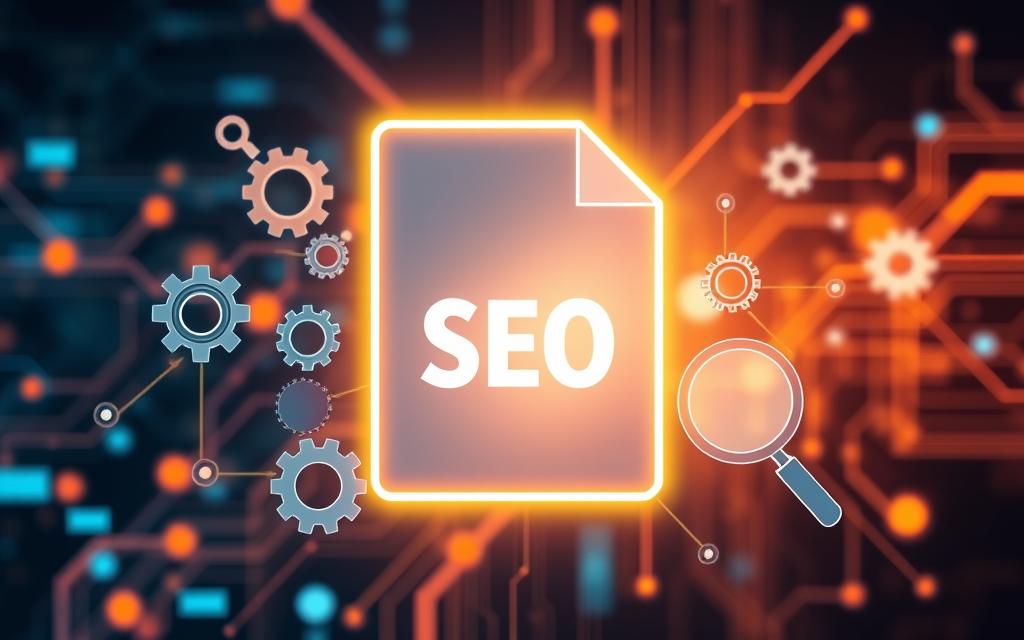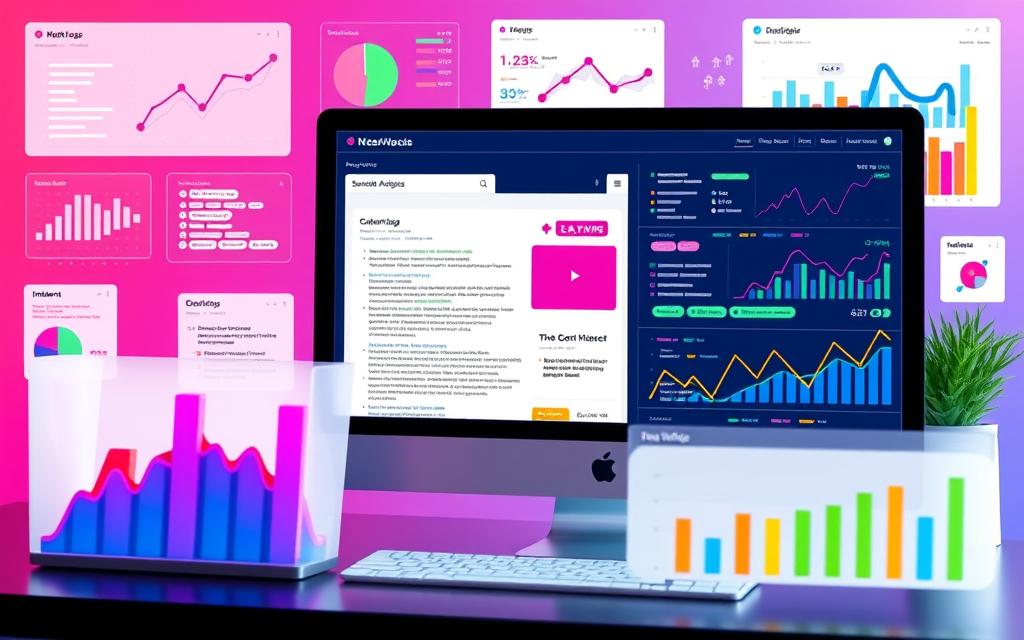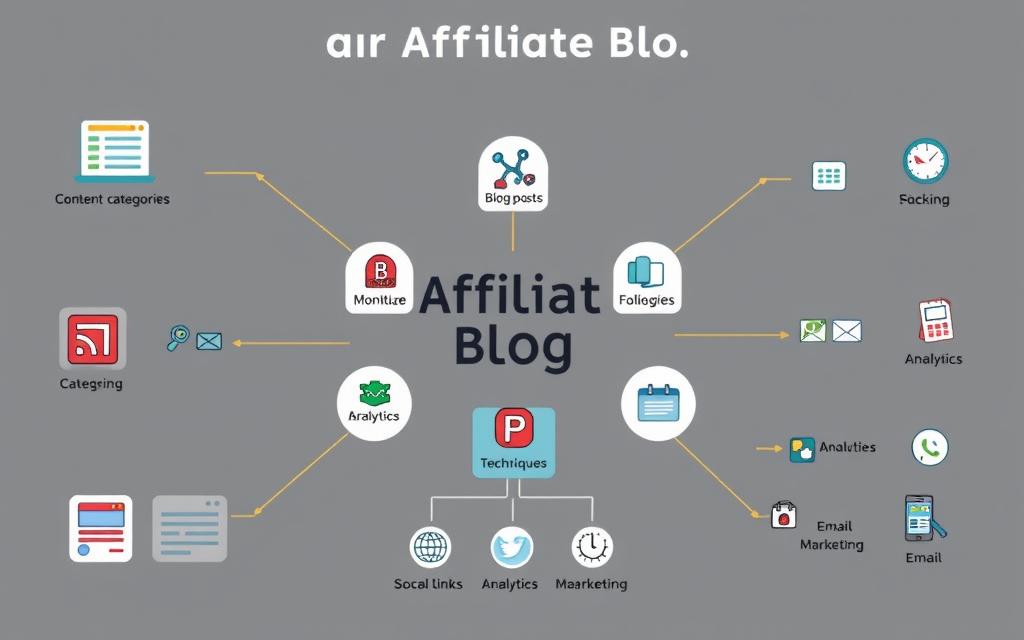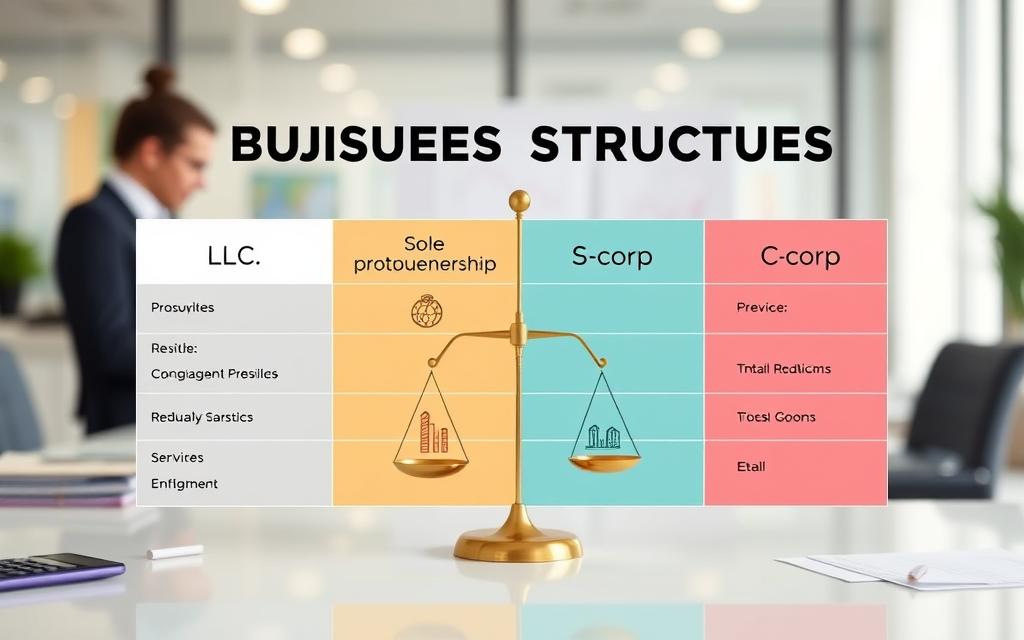In the vast and competitive online world, getting your website to rank high is key. On-page optimization is a powerful strategy to improve your website’s content, structure, and technical aspects. But, you might wonder, what exactly is on-page optimization, and how can it truly transform your website’s visibility and performance?
This detailed article will explore the world of on-page optimization. We’ll give you the knowledge and tools to boost your website’s search engine rankings. You’ll learn about the essential elements of on-page SEO, the importance of content quality, and technical optimizations. We aim to help you increase your online presence and attract more targeted traffic to your business.
Key Takeaways
- On-page optimization is a crucial aspect of SEO that focuses on improving the content and structure of your web pages to enhance visibility and rankings.
- Mastering elements like title tags, meta descriptions, headers, and URL structure can have a significant impact on your website’s performance.
- Producing high-quality, relevant content and optimizing it for target keywords is essential for attracting and engaging your audience.
- Technical optimizations, such as improving page load speed and ensuring mobile responsiveness, play a vital role in enhancing the user experience and search engine visibility.
- Implementing effective internal linking strategies and utilizing schema markup can further boost your on-page optimization efforts.
What is On-Page Optimization?
On-page optimization is key in search engine optimization (SEO). It makes web pages more visible and ranked higher in search results. This involves strategies to improve content, structure, and technical aspects of a site.
Definition and Scope
It covers many areas, like title tags, meta descriptions, and headers. It also means creating quality content that matches target keywords and offers a good user experience.
Importance in SEO
On-page optimization is crucial for a website’s SEO success. It helps improve search engine rankings and boosts organic traffic. This can lead to more visitors becoming customers or leads.
| On-Page Optimization Elements | Description |
|---|---|
| Title Tags | Optimizing the title tags of web pages to include relevant keywords and accurately describe the content. |
| Meta Descriptions | Crafting compelling meta descriptions that entice users to click through to your website from search engine results. |
| Headers and Subheaders | Structuring the content with appropriate heading tags (H1, H2, H3, etc.) to improve readability and relevance. |
| URL Structure | Optimizing the URL structure of web pages to be user-friendly and include relevant keywords. |
Learning on-page optimization can greatly improve your website rankings. It also brings more targeted search engine optimization traffic to your site.
Key Elements of On-Page Optimization
On-page optimization is key to a good search engine marketing plan. By focusing on certain parts of your website, you can make it more visible and ranked higher in search results. Let’s look at the main parts of on-page optimization that help with better search rankings.
Title Tags
The title tag is very important. It’s the headline that shows up in search results. A good title tag is short, clear, and includes the right keywords. This can help more people click on your site and improve your search ranking.
Meta Descriptions
Meta descriptions give a quick summary of your page’s content. They don’t directly affect your ranking but can influence how many people click on your site. Make your meta descriptions interesting, include the right keywords, and tell users what to do next.
Headers and Subheaders
Using headers and subheaders (H1, H2, H3 tags) makes your content easier to read and understand. They help search engines see the structure of your page. Make sure your headers are clear, include the right keywords, and show the page’s content hierarchy.
URL Structure
The way your website’s URLs are set up also matters for on-page optimization. Use URLs that are clean, include keywords, and show the page’s content and structure. Avoid URLs with too many parameters or dynamic parts, as they can hurt search engine crawling and indexing.
| On-Page Element | Best Practices |
|---|---|
| Title Tags |
|
| Meta Descriptions |
|
| Headers and Subheaders |
|
| URL Structure |
|
By focusing on these key elements, you can make your website more visible and attract more relevant traffic. This can greatly improve your digital marketing efforts.
Content Quality and Relevance
In SEO copywriting, content quality and relevance are key to better website rankings. Good content keeps your audience interested and tells search engines your site is valuable. This makes your site more visible and attracts more visitors.
Importance of High-Quality Content
Search engines favor sites with detailed, engaging content. Content optimization means making content that’s well-researched and meets your audience’s needs. High-quality content makes your site a trusted source, boosting your SEO copywriting efforts.
Keyword Integration
- Use relevant keywords in your content to make it more visible and relevant to search engines.
- Make sure your keyword placement feels natural and doesn’t mess up your writing.
- Find a balance between using keywords and keeping your content easy to read.
Use of Multimedia
Adding multimedia like images, videos, and infographics can make your content more engaging. It breaks up text and makes your content more appealing. Also, optimize your multimedia for SEO copywriting by using good file names and alt text.
| Content Element | Impact on SEO |
|---|---|
| High-Quality Content | Improves search engine rankings and user engagement |
| Keyword Integration | Enhances content visibility and relevance |
| Multimedia | Increases visual appeal and content engagement |
By focusing on quality content, smart keyword placement, and multimedia, you can create a strong on-page optimization strategy. This strategy drives traffic, boosts engagement, and improves your website’s search engine rankings.
The Role of Keywords in On-Page Optimization
Effective keyword placement is key in SEO copywriting and content optimization. Keywords help search engines understand your content’s relevance. By using the right keywords, you can improve your website’s visibility and ranking.
Types of Keywords
There are different types of keywords for on-page optimization:
- Primary keywords: These describe your product, service, or content directly.
- Secondary keywords: These are related terms that add context to your primary keywords.
- Long-tail keywords: These are specific phrases with lower search volume but higher conversion rates.
Keyword Density
Finding the right keyword density is important. You need to include keywords enough to show relevance but avoid keyword stuffing. Too many keywords can harm user experience and lead to penalties.
Long-Tail vs. Short-Tail Keywords
Short-tail keywords have higher search volumes but are less specific. Long-tail keywords are more specific and targeted. Using both in your SEO copywriting can attract a wider and more qualified audience.

“The key to effective keyword placement is to strike a balance between relevance, user intent, and natural language.”
| Keyword Type | Search Volume | Conversion Potential |
|---|---|---|
| Primary Keywords | High | Medium |
| Secondary Keywords | Medium | High |
| Long-Tail Keywords | Low | High |
Technical Aspects of On-Page Optimization
Improving your website’s technical parts is key for better search rankings and a great user experience. We’ll explore three main technical aspects: page load speed, mobile responsiveness, and SSL certificates.
Page Load Speed
Page load speed is vital for on-page optimization. Fast websites are favored by search engines like Google because they provide a better user experience. Slow sites can cause people to leave quickly, hurting your ranking.
To make your site load faster, you can compress images, reduce HTTP requests, and use browser caching.
Mobile Responsiveness
As more people use mobile devices, making your site mobile-friendly is crucial. Search engines want websites that work well on all devices, including phones and tablets. A mobile-friendly site with a responsive design and optimized content can boost your visibility and accessibility.
SSL Certificates
Having an SSL (Secure Sockets Layer) certificate is also important for page speed optimization. SSL encryption keeps data safe between your site and users’ browsers. Search engines give secure sites a ranking boost. Getting an SSL certificate can make your site more trustworthy and improve its on-page optimization.
| Technical Aspect | Importance | Key Strategies |
|---|---|---|
| Page Load Speed | Enhances user experience and search engine rankings | Image compression, minimizing HTTP requests, browser caching |
| Mobile Responsiveness | Ensures seamless experience across devices, improving visibility and accessibility | Responsive web design, optimized mobile content |
| SSL Certificates | Improves site security and trustworthiness, boosting search engine rankings | Implement SSL encryption |
By focusing on these technical aspects of on-page optimization, you can improve your website’s performance and user experience. This will help drive more traffic and conversions to your business.
Internal Linking Strategies
In the world of on-page optimization, internal links are key. They help improve your website’s search rankings and user experience. A good internal linking strategy makes your site easier to navigate and boosts its performance.
Benefits of Internal Links
Internal links do a lot. They help search engines understand your website’s layout and connections. They also make it easier for users to find what they need, improving their experience.
- Improve site navigation and user experience
- Distribute link equity and PageRank throughout the website
- Encourage longer session durations and reduced bounce rates
- Establish topic-based content clusters and improve site structure
Best Practices for Internal Linking
To get the most out of internal links, follow some key practices. Place links wisely, use clear anchor text, and make sure your links fit your site’s structure.
- Incorporate relevant, contextual links within your content
- Use keyword-rich anchor text that accurately reflects the linked page’s content
- Maintain a hierarchical structure that reflects the importance and relationships of your pages
- Regularly review and update your internal linking to ensure it remains relevant and effective
With a strong internal linking strategy, you can boost your website’s site structure optimization and on-page optimization. This leads to more visibility, engagement, and sales for your business.
The Importance of User Experience
User experience (UX) is key in on-page optimization. It’s not just about ranking high in search engines. It’s about making your website easy and fun to use. If users get frustrated, high rankings don’t matter.
Factors Affecting User Experience
Several key factors contribute to a positive user experience on your website. These include:
- Intuitive Site Navigation: Visitors should be able to easily find the information they’re seeking, with clear and logical pathways throughout your site.
- Responsive Design: Your website must be optimized for both desktop and mobile devices, ensuring a consistent and enjoyable experience across all platforms.
- Fast Page Load Times: Users expect quick-loading pages, and slow-loading content can lead to high bounce rates and frustration.
- Engaging and Relevant Content: Your on-page optimization efforts should prioritize creating high-quality, valuable content that meets the needs and interests of your target audience.
Site Navigation: The Backbone of User Experience
At the heart of user experience lies the site’s navigation structure. Effective site structure optimization ensures that users can seamlessly explore your content and quickly find what they’re looking for. This includes:
- Clear and intuitive menu structure
- Prominent and descriptive internal linking
- Logical organization of content and pages
- Responsive and mobile-friendly navigation
By prioritizing user experience through on-page optimization and content optimization, you can not only boost your search engine rankings but also foster deeper engagement, higher conversions, and greater customer loyalty.
Optimizing Images for SEO
In today’s digital world, visuals are key to grabbing your audience’s attention. They also make the user experience better. When optimizing your website, don’t forget to work on your images. This includes alt text optimization and content optimization for better search engine rankings.
Image File Names
How you name your images matters a lot. Don’t use generic names like “IMG_1234.jpg”. Instead, choose names that are descriptive and include keywords. This helps search engines understand your images better and rank them higher in searches.
Alt Text for Images
The alt text is a key part of on-page optimization. It describes the image, helping search engines and screen readers get the image’s content. Writing clear and concise alt text with the right keywords boosts your website’s alt text optimization.
Here are some tips for better alt text:
- Describe the image accurately and briefly.
- Use relevant keywords but avoid stuffing.
- Avoid using generic terms like “image” or “picture”.
- Keep the alt text under 125 characters.

By optimizing your image file names and alt text, you can greatly improve your website’s content optimization. This will also help your website show up better in search engine results.
Schema Markup and Rich Snippets
In the world of on-page optimization, schema markup and rich snippets are key. They help your website stand out and perform better in search engines. These tools go beyond the basics, giving search engines a deeper look into your content.
What is Schema Markup?
Schema markup, or structured data, is a set of tags for your website’s HTML. It helps search engines like Google understand your web pages better. This leads to more detailed and attractive search results.
Benefits of Using Schema
Using schema markup on your site offers many benefits. It boosts your on-page optimization, content optimization, and site structure optimization. Here are some key advantages:
- It makes your site more visible in search results with rich snippets, showing ratings, reviews, and prices.
- It improves the user experience with more detailed search results, leading to higher click-through rates.
- It increases your site’s credibility and trust, making it a reliable source of information.
- It helps search engines understand your content better, leading to more accurate indexing and ranking.
By adding schema markup to your on-page optimization strategy, you can maximize your content’s potential. This improves your search engine performance overall.
| Schema Type | Description | Example |
|---|---|---|
| Product | Provides detailed information about a product, including price, availability, and reviews. | Headphones, Cameras, Laptops |
| Review | Allows you to display customer reviews and ratings directly in search results. | Product reviews, Service reviews, Restaurant reviews |
| Event | Helps search engines understand the details of an upcoming event, such as the date, location, and description. | Concerts, Conferences, Festivals |
Monitoring and Analyzing On-Page SEO
In the world of on-page optimization, keeping an eye on things and analyzing is key. This ensures your SEO copywriting and content optimization are working well. By watching important metrics and using top tools, you can learn a lot about your web pages. This knowledge helps you make smart choices to boost your online presence.
Tools for SEO Analysis
There are many SEO analysis tools out there to help you understand your on-page strategy better. Some top tools include:
- Google Search Console: Gives you detailed info on your site’s search performance, indexing, and technical issues.
- Google Analytics: Shows you how users behave, where they come from, and what they do, helping you see the effects of your optimizations.
- Ahrefs: Offers insights into your site’s backlinks, keyword rankings, and how you compare to others.
- SEMrush: Combines keyword research, site audits, and competitor analysis to find ways to improve your on-page optimization.
Key Metrics to Track
It’s important to watch these key metrics to see how well your on-page optimization is doing:
- Organic search traffic: This shows how many visitors come from search engines, which tells you if your optimization is working.
- Keyword rankings: Keep an eye on where your site ranks for important keywords. This shows how well your optimization is doing.
- Bounce rate: A low bounce rate means people are sticking around, which is a good sign of a good user experience.
- Time on page: This tells you how long people stay on your pages, showing if your content is engaging and relevant.
- Conversion rate: This measures how many visitors do what you want them to, like buying something or filling out a form. It shows how well your optimization is working overall.
By using these tools and tracking these metrics, you can keep making your on-page strategies better. This keeps your website visible, engaging, and successful in the changing digital world.
Common On-Page Optimization Mistakes
When optimizing your website, it’s key to avoid common mistakes. Two big ones are over-optimizing and ignoring mobile users.
Over-Optimization
Some try too hard to rank higher by stuffing keywords everywhere. This makes text sound unnatural and focuses too much on search engines. Keywords are important, but use them wisely.
Too much optimization can hurt your site’s ranking. Search engines want to show users helpful content. Aim for a balance between SEO and a good user experience.
Ignoring Mobile Users
With most people using mobiles to browse, ignoring them is a big mistake. A site not optimized for mobiles can lead to bad user experience and lower rankings.
- Make sure your site works well on all devices with a clean layout.
- Optimize images and videos for fast loading on mobiles.
- Add features like click-to-call buttons for mobile users.
Fixing these mistakes can make your site better for both search engines and visitors. This leads to more engagement and sales.
Staying Updated with SEO Trends
The world of digital marketing is always changing. Keeping up with the latest SEO trends and best practices is key. This ensures your online presence stays strong. Learning and adapting are crucial in this fast-paced field.
Importance of Continuous Learning
SEO is always evolving, with Google’s algorithms and user preferences changing often. To stay competitive, it’s vital to know the newest SEO strategies. This includes the latest in SEO copywriting and content optimization.
Resources for Keeping Current
There are many ways to keep up with SEO best practices. Leading blogs like Moz, Search Engine Land, and SEMrush offer regular updates. Also, webinars, online courses, and conferences can help you stay ahead.












Leave a Reply